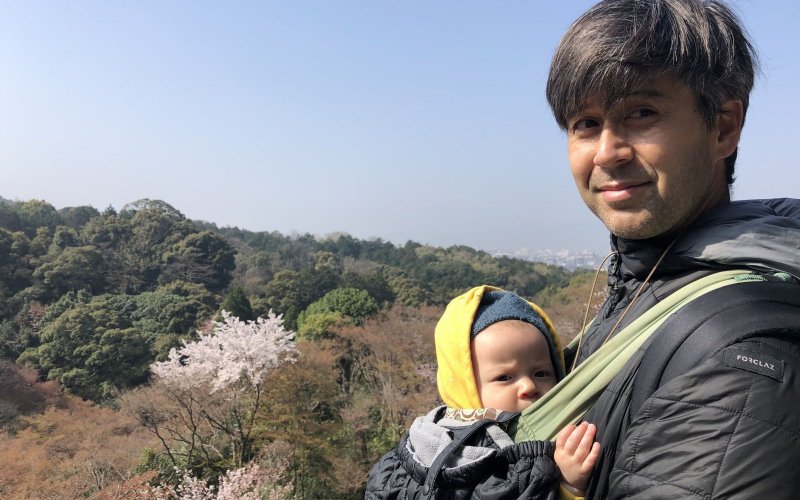5 Questions with Faculty: Michitake Aso

ALBANY, N.Y. (May 4, 2021) — Michitake “Mitch” Aso is an associate professor in the Department of History, where he teaches courses on the global environment, medicine and health, and Southeast Asia. His book, Rubber and the Making of Vietnam: An Ecological History, 1897-1975 (UNC Press, 2018), was awarded both the Henry A. Wallace Award (Agricultural History Society) and the Charles A. Weyerhauser Award (Forest History Society).
This fall, Aso will be teaching a teaching a brand-new, interdisciplinary course, HST 202: Not Even Past, which satisfies UAlbany’s “Challenges for the 21st Century” general education requirement.
What is the new course about?
The course overall was designed by history faculty in collaboration with colleagues in Emergency Preparedness (CEHC) and Public Health (SPH). It’s a history course that engages students in an exploration of the past and its role in tackling the real-world challenges of the present.
This fall, my focus for the semester is pandemics, building on questions raised by COVID-19. How have people around the world experienced pandemics in the past, such as the 1918-1919 influenza? What have been the most effective responses and why? What hasn’t worked? What role have human interactions with animals played in creating pandemics? How might we better prepare for the next pandemic? Finally, how can responses take into better account inequalities among individuals and societies?
What’s behind the involvement of CEHC and SPH?
Present-day events don’t happen in a vacuum. Environments have been exploited; lands and people have been colonized or displaced; the climate is changing, with disastrous effects not only on coastal populations but also on those suffering the effects of extreme weather events, such as heat waves, hurricanes, and flooding. Worldwide, populations are forced from homelands by war, drought, famine.
And as we’ve seen, the emergence of a new strain of virus can lead, with terrifying speed, to a global pandemic. Ultimately, my fall course on pandemics looks at how people have faced challenges both individually and collectively in the past — making explicit how historians work, how they know what they know, how they grapple with the ways in which identity and privilege have affected the historical record, with the hope of providing students the tools they’ll need to face and perhaps even solve similar challenges in the present and future.
Your work focuses on the global environment. Can you explain what that means, and how health and disease fit into that?
There are many ways to study the global environment and its past. Some historians focus on phenomena, such as climate change, that literally span the globe. Others look at things such as water pollution in a few places around the world and make comparisons between those places. I focus on one place, Vietnam, and put its environmental and health history in a global context.
For my book on rubber, I wrote about the environmental and social changes brought about by the introduction of rubber to the foothills of southern Vietnam. I wrote about these changes as an example of what happens when plantation agriculture takes root in a place. In terms of health, one of the major consequences of plantation agriculture was an explosion in the incidence of malaria and other diseases. Malaria already existed in the region but ecological transformations linked to rubber production brought mosquitoes, plasmodia and Vietnamese bodies together in a new, and deadly, way.
What is the focus of your current research?
I’m currently working on a history of Vietnamese responses to environmental warfare and diseases exacerbated by warfare during the Cold War. Those living in North and South Vietnam (and Laos and Cambodia) faced an environmental and social apocalypse. But even as millions were sickened, injured, or killed, many learned to survive environments rendered hostile in new ways. These experiences contributed to a “coping environmentalism,” which is particularly relevant in today’s world where individuals and societies face existential threats including climate change, air and water pollution, and pandemics. In a related project, I’m co-editing a book on the history of medicine in Southeast Asia during the Cold War.
I’m very excited about this project because it brings together both younger and more veteran scholars, whose work covers almost all of the region. Moreover, many of the authors in this volume adopt a transnational approach to study diseases that clearly have not respected national borders.
What’s one thing that most people don’t know about you?
Sports, scholarship and travel have played an important part in my family’s history. My grandfather taught chemistry at a high school (which later became a university) in Japan. He also loved tennis and coached for several years. Recently some of his former students honored his passion by naming a local tennis tournament after him. He passed these interests on to my dad, who was quite good at tennis and came to the United States to study thanks to a tennis scholarship. He later taught sociology at an American university and ended up staying his whole life here.
Both my sister and I are professional historians and we both like tennis, though we only played for our high school teams and are pretty rusty at this point!




